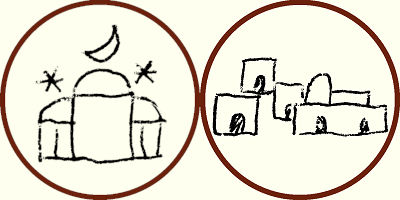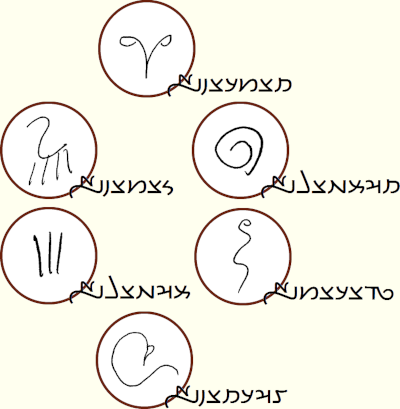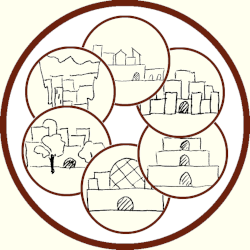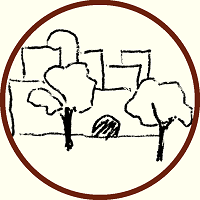HOME | DD
 blege22 — Tribes and Cities of the Tarib - 9
blege22 — Tribes and Cities of the Tarib - 9

#fantasy #gimp #scanner #worldbuilding #ballpendrawing #inventedhistory #inventedantiquity #ancientrurallife
Published: 2024-04-19 22:01:17 +0000 UTC; Views: 805; Favourites: 38; Downloads: 0
Redirect to original
Description
Harna and MenrishThe Orem sanctuary of Harna is the size of a city and has a similar size of population, but only priests and novices live there. There are no settlements directly next to the temple complex, out of reverence for the Orem priesthood and their soothsayers, who, also because of some documented deifications, are considered to be particularly connected to their god and his messengers and are believed to have a significant proportion of unearthly blood.
However, in the oasis of Menrish (probably named after a person or family who first settled there), which is only two hours away from the sanctuary, a steadily growing settlement arose, parallel to the development of Harna's importance for the Tarib, with several caravanserais and various, urban-like entertainments make the waiting time until the priests sayings pleasant for the pilgrims seeking advice.
* * *
Villages and Inhabited Oases
In the villages along the caravan routes to the south, especially in the caravanserais there, where the nomadic and urban Taribian culture meet, a unique mixed culture has formed, which for the Oshey is already as urban as it can be. However, travelling city dwellers think, they can experience here, how their tribal ancestors once lived. Small bathhouses in all caravanserais, for example - with a washing facility and a hot water basin, which is often just a large wooden tub - confirm both sides of their assumptions.
Life in the big cities and the more rural settlements differs dramatically from one another. The obligation conveyed in the 'Written', to care for the family in the tribe, includes practically every member of the tribe. Consequently, among the Oshey, the tribal name is the 'surname' of all people belonging to the tribe. Because of the mostly barren life in the villages, a similar care for each other exists there, at least as far as the resources allow.
* * *
Wells, Uninhabited Oases and Bandits
Many villages along the Taribian Road owe their existence to increased trade and traffic, but also to fortified guard and intelligence posts, and conversely promoted change and trade. However, some settlements were abandoned after a few years due to the barrenness of the location.
Even without regular patrols and despite the large number of attacks by bandits on the - therefore armed - caravans, the vital wells of now uninhabited oases at the caravan routes to the south are usually intact, even if a large number run dry during the hot season.
The bandits are mostly outcasts from the Oshey tribes, but there are also town dwellers who have no other means of making a living. These two groups are forced to get along with each other in the gangs, as they can only survive in a community in the steppe and the inhospitable desert. The bandits often seek and find shelter in or near abandoned oases.
Determined by the origins of many bandits, these gangs are also organized like a tribe, with the leader of the bandits at the top, who claims all the rights of a prince for himself, and below him the subordinate leaders, who, like the elders of the families, form his council.
* * *
The German text I wrote in 2023 for my website, the English version of the text was made by me in 2024 with help of the Google Translator (for enhanced vocabulary) and 'Language Tool' (to check spelling).
The graphics I drew in 2023 with a ball pen, they should show the Orem sanctum Harna with the sign of Orem (the crescent moon and the stars), and the oasis von Menrish, with large buildings to host the pilgrims, as they might be depicted on coins. Then I scanned the drawings and edited them moderately in GIMP, e.g. put neat circles around.
Related content
Comments: 2

👍: 1 ⏩: 1

👍: 1 ⏩: 0
























